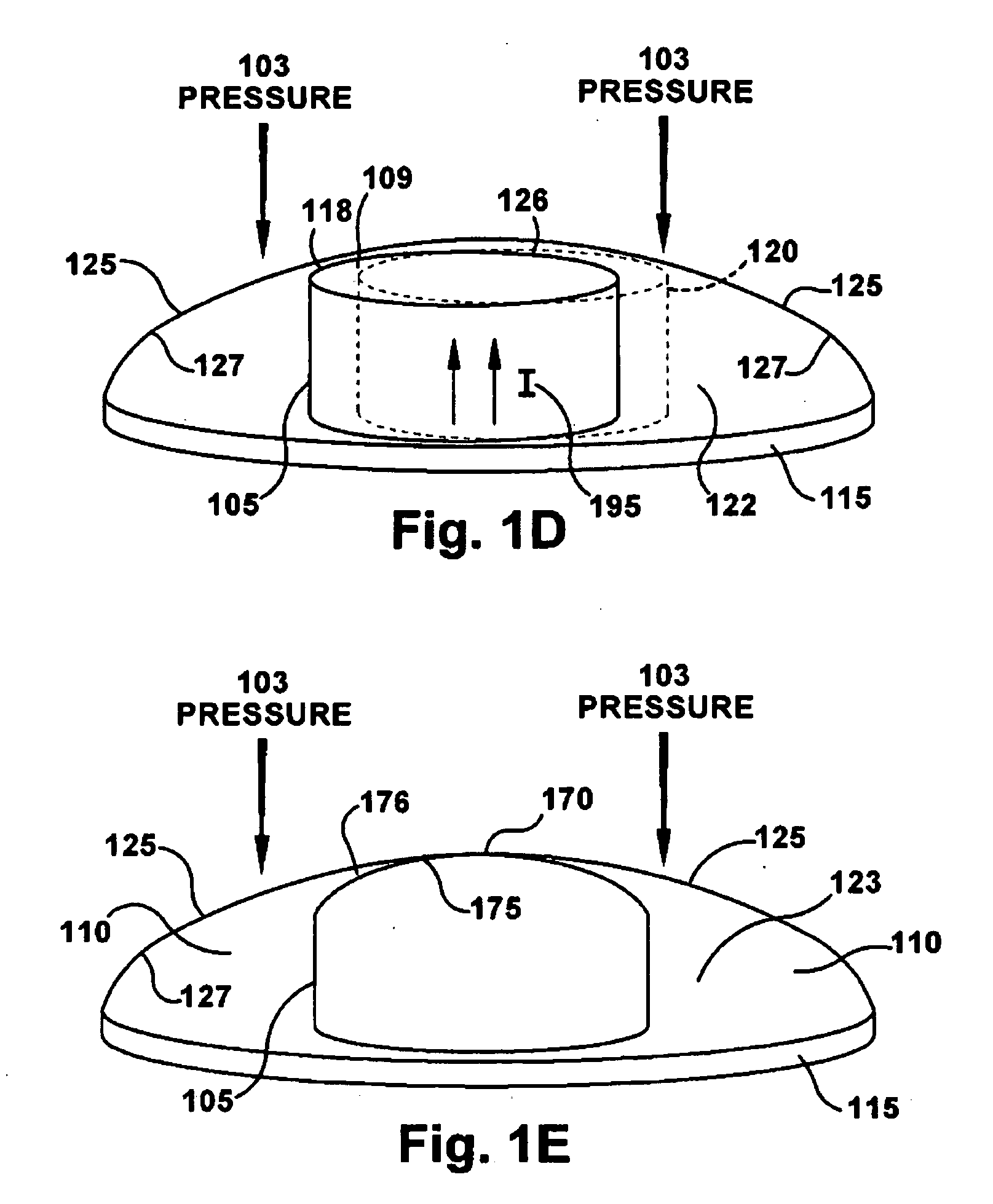Resistive contact sensors for large blade and airfoil pressure and flow separation measurements
a technology of resistive contact and sensor, which is applied in the direction of instruments, liquid fuel engines, machines/engines, etc., can solve the problems of preventing the pressure measurement from being used in the production of wind turbines, and the directionality of the pressure measurement to be further limited
- Summary
- Abstract
- Description
- Claims
- Application Information
AI Technical Summary
Benefits of technology
Problems solved by technology
Method used
Image
Examples
Embodiment Construction
[0035]The following embodiments of the present invention have many advantages, including offering pressure sensors as thin streamlined patches on the turbine blade that do not impact the blade structure and fluid dynamic characteristics. The sensors permit the elimination of port and tubes, eliminating hysteresis, damping directionality and providing increased frequency response relative to previous mechanical pressure measurements, thereby achieving a more accurate measurement. Further the thin patches of the sensor may permit incorporation into the blade surface for real time wind turbine performance measurement and real time turbine control capabilities. Additionally, the contact patches may be applied to the surface for diagnostic and validation purposes.
[0036]Recently, various contact sensors have been developed, which include a conductive composite material formed of a polymer and a conductive filler. The composite materials of the contact sensor may have physical characterist...
PUM
 Login to View More
Login to View More Abstract
Description
Claims
Application Information
 Login to View More
Login to View More - R&D
- Intellectual Property
- Life Sciences
- Materials
- Tech Scout
- Unparalleled Data Quality
- Higher Quality Content
- 60% Fewer Hallucinations
Browse by: Latest US Patents, China's latest patents, Technical Efficacy Thesaurus, Application Domain, Technology Topic, Popular Technical Reports.
© 2025 PatSnap. All rights reserved.Legal|Privacy policy|Modern Slavery Act Transparency Statement|Sitemap|About US| Contact US: help@patsnap.com



